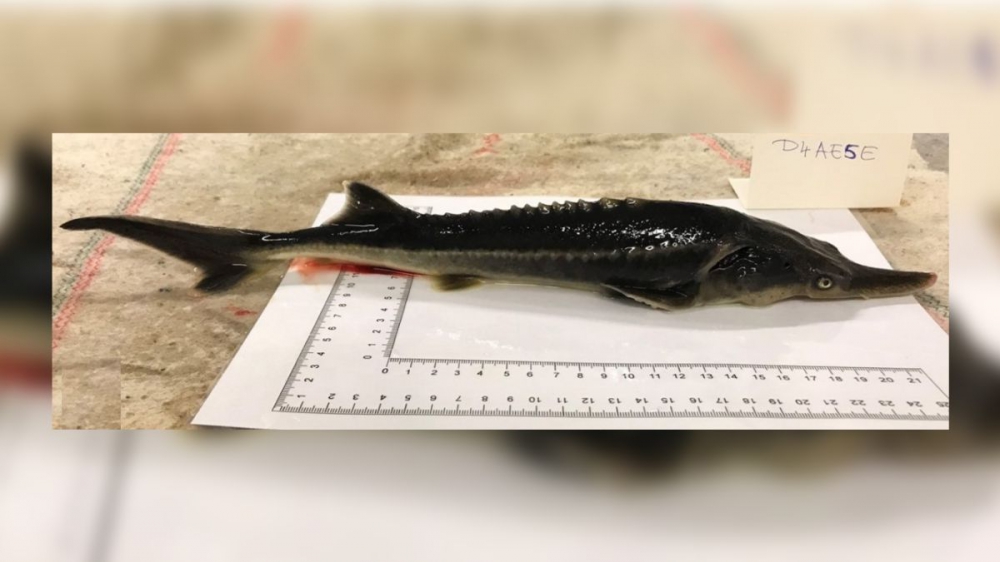By now we all should’ve known that “There must be more to life than this” no not that “Life always find s away”. And exactly what happened when scientists tried to breed Russian sturgeon eggs through gyno-genesis using paddlefish sperm. instead of reproducing asexually, the sturgeon eggs combined with the paddlefish and created a replacement hybrid form called the sturddlefish and reports state that was completely unanticipated.
And for those that it should concern, there aren’t only one but 2 different styles of sturddlefish both of em’ bearing the resemblance of their parents. And for now, the scientists don't have any plans to breed out more children, although they didn’t even plan on those they’ve got. Till then scientist plan on studying how it had been actually created. And they’ve also released some notes on how they created them accidentally and let me provide you with a look.
Initially, the scientists wanted to use gynogenesis (a type of inheritance) to reproduce the Russian sturgeon eggs. A sort of parthenogenesis which involves agamogenesis in gynogenesis, all of the genetic material comes from the egg and merely introducing sperm into the environment near the eggs will cause the eggs to develop, with none actual fertilization by the sperm.
In 2014, a writer at the National Library of drugs, gynogenesis had been used successfully on the eggs of a ship sturgeon with the sperm of a Siberian sturgeon. As a gaggle of species, relates the International Union for the Conservation of Nature, sturgeons are the foremost critically endangered compared to the other, which is primarily why scientists try to use gynogenesis to extend their population.
According to Smithsonian Magazine, this can be what scientists attempted to try to to with the Russian sturgeon eggs and paddlefish sperm. Although the sperm was irradiated in one amongst the experiments, it had been left undamaged in another. Previous failed attempts at hybridization had led scientists to believe that hybridization was simply unacceptable between the 2 fish. But then, says the article at MDPI, one amongst the control groups with non-irradiated sperm suddenly produced a bunch of viable hybrids.
This definitely wasn't speculated to happen. Smithsonian quotes: "This hybrid should die The embryonic development mustn't have happened in the first place." Instead, about two-thirds of the hybrid school survived the primary month, and as of July of this year over 100 of em’ are still living.
Not only was this incredibly unexpected from a genetic point of view, but this might never have happened within the wild. the 2 fish live "on opposite sides of the globe" and with different habits and feeding habits, it's questionable whether or not they would've crossed paths within the wild. However since both fish belong to the Acipenseriformes group, their genetics aren't so different.
In the end, two sorts of hybrids were born. While one in each of the hybrids features a pointier face, the same as the paddlefish, both hybrids have a version of the sturgeon's ridged back.
Man-man hybrids, like mules and bananas, are typically infertile, says Frontiers for Young Minds, and scientists believe that the sturddlefish are going to be similarly. Ligers, however, are known to supply offspring, as Britannica reports, therefore the fate of the sturddlefish remains to be seen.
According to Smithsonian Magazine, however, one among the incentives for breeding more Russian sturgeons comes from the very fact that they provide the globe with most of its caviar. Hybrids don't provide a particular industry with what it desires (Well I didn’t say caviar). As a result, scientists "don't commit to making more." But since the sturddlefish was created entirely by chance, clearly plans don't always go accordingly.
According to an article, scientists believe that if the hybrids follow the feeding habits of their parent, then they will "play a very important role in adapting pond aquaculture to the challenges of global climate change." And with the potential that feeding sturddlefish may produce fewer carbon emissions, these "accidental hybrids could find yourself being more valuable than their creators imagined."
Well, for now, the hybrids will remain in Hungary’s centre where they were born, "where there is not any risk they'll invade non-native waters."


Comment